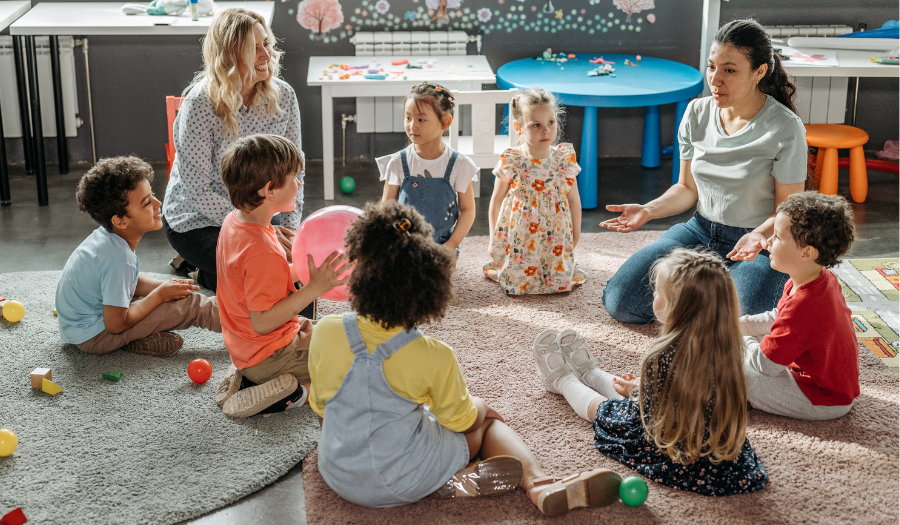Group or classroom management is an evergreen topic among educators, and for a reason. After all, well-managed groups are more likely to stay focused, engaged, and learning. In this blog post, we give you some tips to help you keep your ducks in a row – or at least from flying out the window!
Set Clear Rules and Expectations
It is important for young learners to know what is expected of them. This will help them feel safe and comfortable, which in turn helps them learn better. That’s why it’s a good idea to spend some time introducing the group’s rules to your young learners. Keep the rules simple and few; you can choose the most important ones to focus on first and add more later if needed.
Introduce the rules through a game or with the help of a puppet for added intrigue. Include visual aids and gestures which you can use to remind children of the rules later if they forget. Even if you prefer to use only the foreign language in the group, it might be worthwhile to do a quick check in the children’s mother tongue to make sure that they have understood the rules. Once you have introduced the rules, practice them through some games or other activities with plenty of repetition.
Once your learners know the rules, make sure to enforce them, too. When the children follow the rules well, compliment them or reward them in some way. And when a child breaks a rule – which might happen a lot at the beginning – gently remind them of the rule and why it’s important to follow it. This is usually enough to restore peace, but you should also plan for what the consequences will be if the rules are broken consistently.

Establish Routines
Young children thrive on routine and predictability. That’s why it’s a good idea to create consistent routines for common activities such as greetings, circle time, transitions, cleanup, and goodbye. These routines can consist of certain behaviors, activities or phrases. For example, will you greet each child at the door before they come in and sit down? Will you ring a bell when it is time to move onto the next game? Will you end the session with the same activity each time, like in Moomin Language School?
Demonstrate each routine and procedure as their time comes during the session, and then practice them with the children. Visual cues and gestures can be a great help here as well. Repetition helps with reinforcement and ensures that all children understand what is expected, while also helping children learn the language related to each routine and procedure. Don’t worry if the children don’t learn the routines and procedures in the first session; there are plenty of chances for children to practice them when they come up in later sessions.

Use Clear Language
Before your first session, think of some central phrases and instructions that you know you will need often, such as “Stand up,” “Repeat after me,” or “Listen”. Think of what gesture and facial expression would help you to convey the meaning. The combination of visual and auditory cues will help children to understand what you want and to remember the instruction better.
Pay attention to how you give instructions as well, especially if your learners are very young or you have some cheeky monkeys in your group. The younger the children, the simpler the instructions should be, and always complete one step of the instructions before moving onto the next one. Whenever possible, model the wanted behavior yourself and give children some time to understand and follow the instructions.
Very young children don’t understand questions-as-commands the same way adults do, so it’s better to be direct with your instructions. Instead of saying “Can you close the door?” it’s better to say, “Close the door, please.” It’s a small change, but I have seen it work wonders! Similarly, if you have decided that you will sing a song together, for example, instead of saying “Shall we sing a song together?” it’s better to say, “Let’s sing a song together.” This helps prevent confusion and ensures that children understand your expectations.

Build Strong Relationships
Finally, trust is vital for a positive learning environment. When your learners know that you genuinely care about them and want them to succeed, they are more willing to listen, to try new things, and to work together. And your example will encourage them to build better relationships among themselves, too.
Ask your learners about themselves and their interests and use their names when talking to them. Encourage them to express their opinions and make choices in their learning when appropriate. Celebrate their successes and encourage them. And don’t be afraid to be yourself and show your personality – when you are comfortable and enjoy what you are doing, your learners will too!
Moomin Language School is a play-based early language learning program for learning organizations. Would you like to try it out for yourself? Apply for a free trial month here:
.


